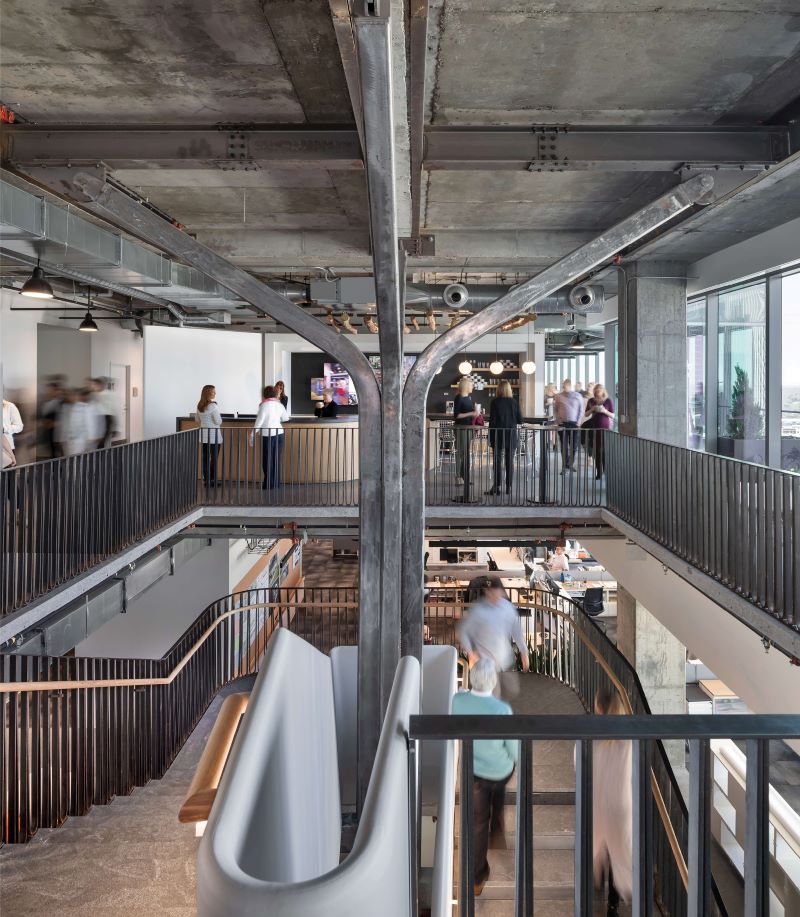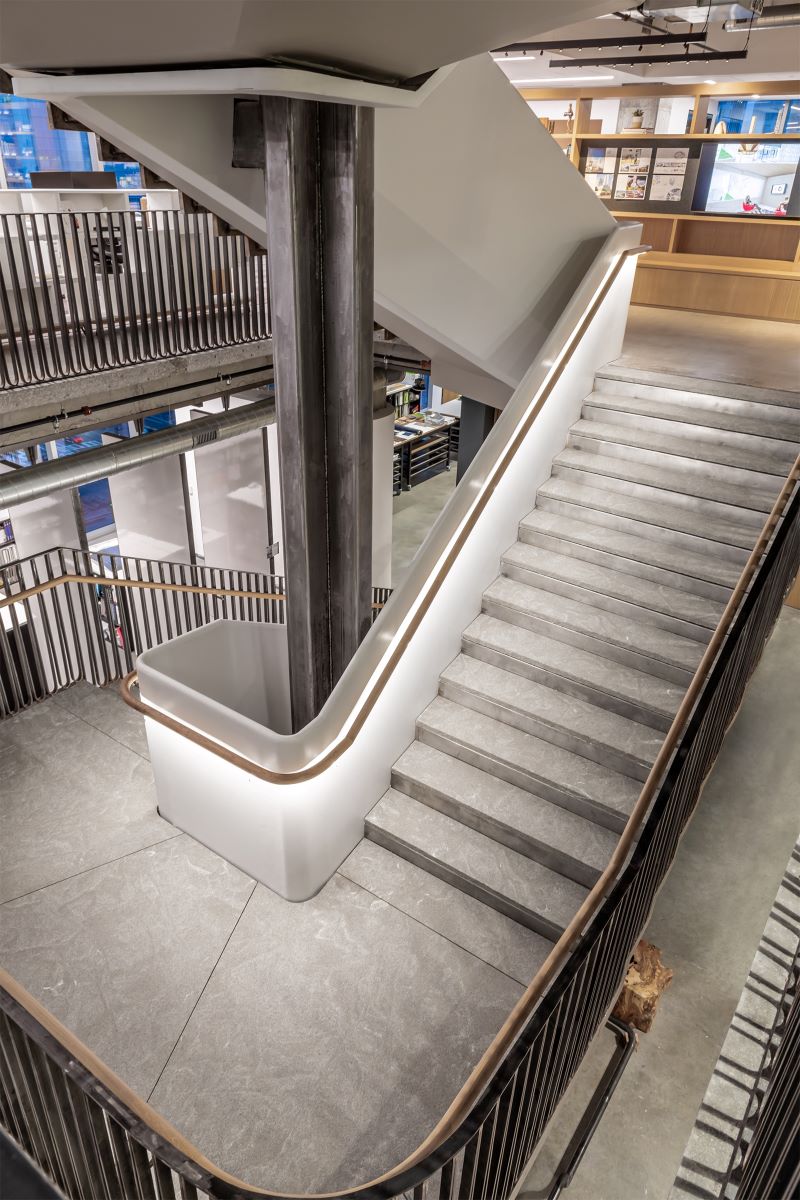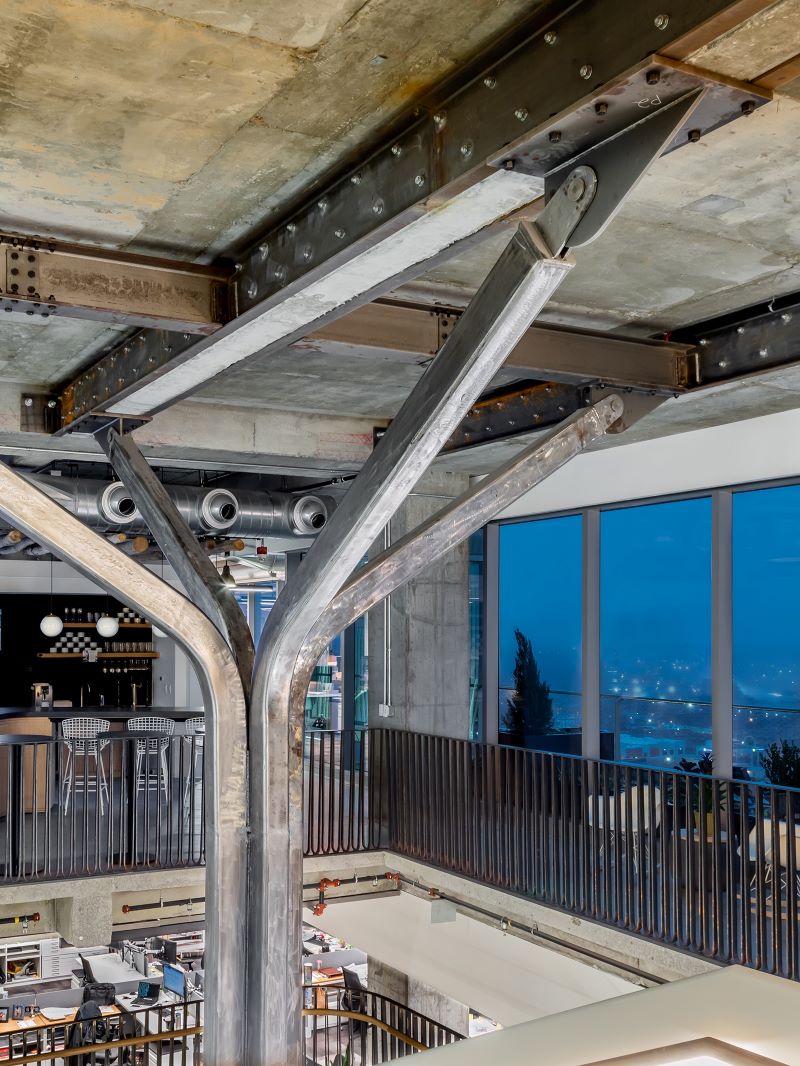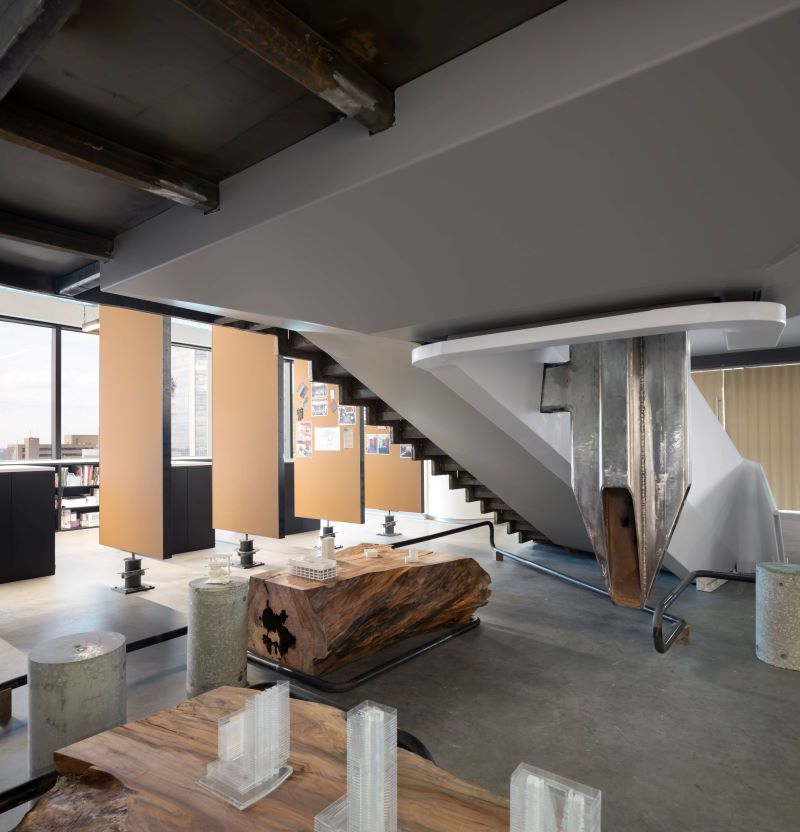AISC
Little Charlotte Office Monumental Stair
Merit Award - Sculptures/Art Installations/Non-Building Structures
Hanging a staircase in the middle of an office space and looking at the design of the space and how it interacts with the users really draws you in. It makes you want to learn more about the project and really interface with the design. —2020 IDEAS² Judge Sheryl Van Anne
When it recently relocated to a new high-rise in downtown Charlotte, N.C., architecture and engineering firm Little didn’t just move into a new space; it created a new experience by designing its own flexible, attractive, and sustainable space, which is pursuing LEED and WELL Silver certifications.
The new office occupies the 14th, 15th, and 16th floors of the building. And connecting all three floors is an open, internal staircase that acts as a focal point and an architectural center of gravity. With the stair connecting all three of Little’s floors, the team was able to remove the mildly reinforced concrete slab and a 21-in. mildly reinforced concrete beam at two levels, which totaled 28 tons of concrete—more weight than the stair itself.
Instead of being traditionally anchored and reinforced at the lowest level, which would disturb existing tenants on the 13th floor below, this 15-ton stair hangs from a four-pronged structural mast anchored to the underside of the building’s 17th floor. The four-pronged structural mast distributes the load of the stair to the underside of the 17th-floor beams with bolted steel channels and transfers some of the load to the 16th and 15th floors, allowing the existing structure to adequately carry the appropriate load as required by code. Approximately 55% of the dead and live loads are carried by the 17th floor, while the 16th and 15th floors support the remainder of the load transferred from the inside HSS14×4 stringers. The mast connection to the 17th floor is accomplished by four 2¼-in.-diameter pins, and was used to eliminate the transfer of any moment into the existing structure while also complementing the rawness of the design.
The main stair structure was designed to give the impression that the stair floats. Two HSS10×6 outriggers are cantilevered from the steel mast at each level supporting each HSS14×4 stringer, and an HSS14×4 outrigger cantilevers from the mast to support the landing. The main HSS14×4 stringer runs along the inside edge of the stair directly under the inside railing and is supported by the 15th and 16th floors as well as the HSS10×6 outriggers at the intermediate landings, which frame back to the center mast. A secondary HSS6×6 stringer runs along the stair approximately 2 ft, 4 in. from the outside edge of the stair. The architects requested that the edge of the stair treads be exposed steel and termed this element the “zipper,” which in turn supports the outside railing.
Even with diligent planning from both the engineering and design team, the stair execution did not come without its challenges. One obstacle was the limited size of the building’s freight elevator, which in turn limited the size of elements and assemblies that could be transported to the space. The solution? Construct the stair at the fabricator’s (C.M. Steel) shop and then cut it into 42 pieces to be delivered and reconnected on-site. Once in the space, the stair was pieced back together using full-penetration welds. The construction sequence took advantage of the existing floor by installing the hanger framework on the underside of the 17th floor prior to cutting the new holes in levels 16 and 15.
The team also had to take care not to damage rebar and post-tensioned (PT) cables while adding the connections to the 17th floor and attaching the stringers to the 15th and 16th floors (bolted to the PT girders). X-ray and ground-penetrating radar allowed the team to locate all reinforcement and PT cables prior to drilling.
While the structural integrity of the stair was important, so was its architectural design. A winding ribbon of structural steel creates a finished backbone rendered in white, contrasting with the rawness of the steel that it threads together. All exposed steel was left to patina for several months in the field. It was later rubbed with a protective bee’s wax (selected to meet the WELL requirements for the space).
The apparent hand of the craftsperson was also integral, and the materials used were critical in how the stair would invite users—the more “raw,” the better. Bolted connections, welds, bends, and cuts express the inherent beauty of the materials in terms of how they look, feel, and sound. To keep with this intentional rawness, the visible welds were only lightly ground, and the railing surrounding the stairway mimics the shading of architectural sketches.
Steel fabricator, detailer, and erector: C.M. Steel, Inc., York, S.C. *AISC Member*
Project ownership, architect, and structural engineer: Little Diversified Architectural Consulting, Charlotte, N.C.
General contractor: DPR Construction, Charlotte, N.C.
- Location: Charlottte, NC
- Award Winner Year: 2020
- Year Completed: 2018
- Submitting Firm: Little Diversified Architectural Consulting
- Photo Credit: 1, 3, 4 - Ricardo Pulido; 2, 5 - Tim Buchman





